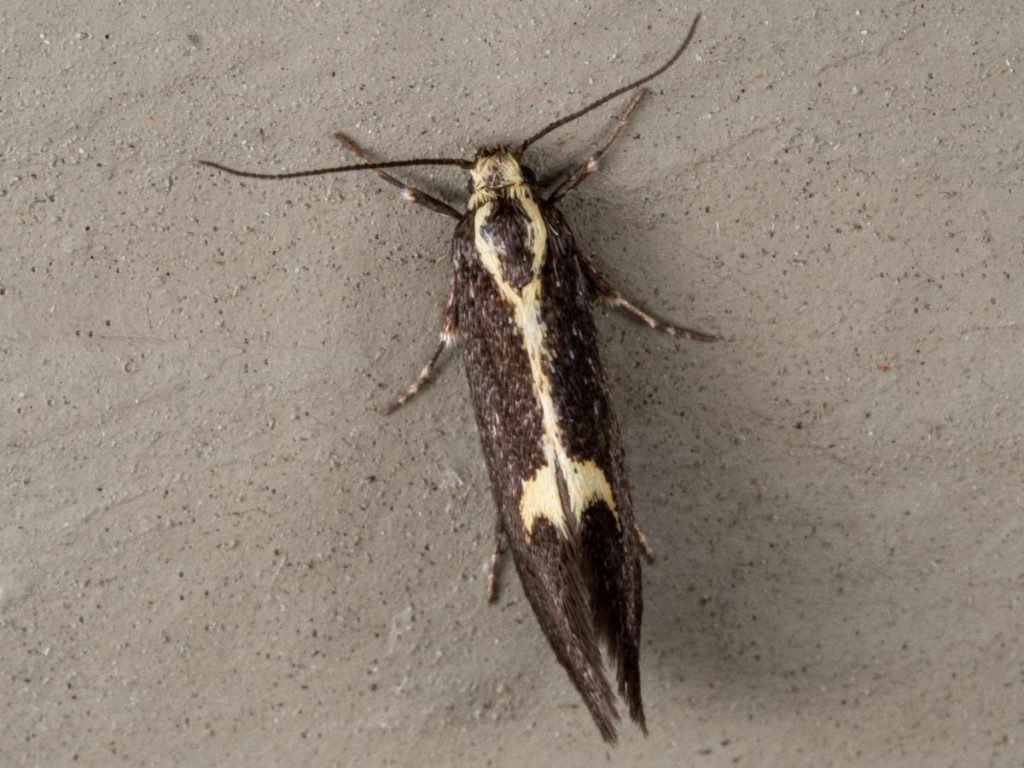National Moth Week Edition
It’s moth’s time to shine! We’ve compiled a special moth edition of What’s Buzzin’ (or maybe What’s Mothin’ would be more appropriate) to celebrate national moth week. Moths are an incredibly diverse group of insects, outnumbering their more popular Lepidopteran relatives, butterflies, by 8 to 1. Maybe it’s their mostly-nocturnal nature that makes them less appreciated by the average person, but they serve as crucial pollinators, and many species of plants have very specific plant-pollinator relationships with them. They certainly deserve their week in the spotlight.

Simple Wave
Scopula junctaria
The Simple Wave is a small (20-26 mm) moth with a northern distribution found in all Canadian provinces and the northern United States, south to Maryland, Arizona, and California. With only one generation per year, adults are on the wing from May through August. Their larvae feed on clover, elm, and chickweed, among others.
Connie Geiger, July 15th, 2023. Spokane Hills, Helena, MT.
Police Car Moth
Gnophaela vermiculata
This unique-looking (and uniquely named) moth is found in the Rocky Mountain region of North America, as far north as British Columbia and south to New Mexico. Adults are usually on the wing in late summer, and can be found flying during the day. The larvae – whose coloring eventually matches the adults – hatch in the fall and overwinter in the ground.
Kelly Dix, July 12th, 2023. Rattlesnake Recreation Area, Missoula, MT.
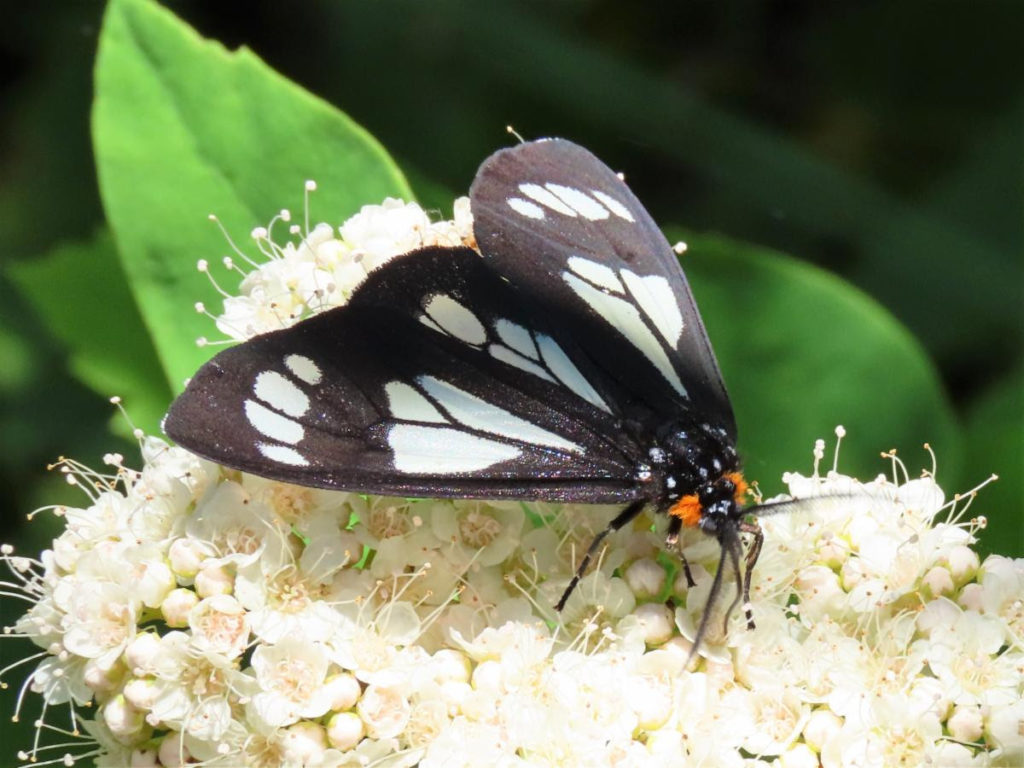
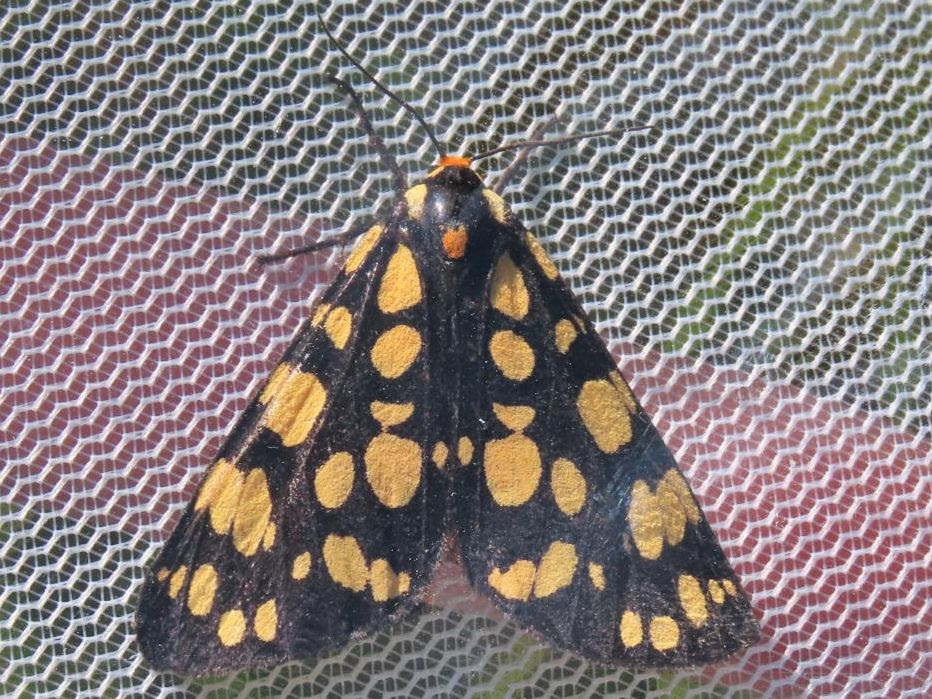
Ranchman’s Tiger Moth
Arctia virginalis
This striking moth was recently moved from the genus Platyperus into the genus Arctia, along with four other genera of moths. The adults are easily recognized by their bold patterning, but the caterpillars are easily recognized, too. With their fuzzy black and brown bodies and long, dense hairs, they are one of several species of caterpillars that are often referred to as “woolly bears.”
Kelly Dix, July 12th, 2023. Rattlesnake Recreation Area, Missoula, MT.
Angle Moth
Macaria sp.
Angle moths in this genus are found across North America and display a wide range of colors and patterning. Like many moth species this far north, we will only see one generation per year, with adults on the wing from May to September. Most of the larvae of this genus feed on coniferous shrubs and trees, though a handful feed on deciduous trees or herbaceous plants. The genus name originates from Greek mythology – Macaria is known as Hercules’ daughter.
Kelly Dix, May 30th, 2023. Victor, MT.
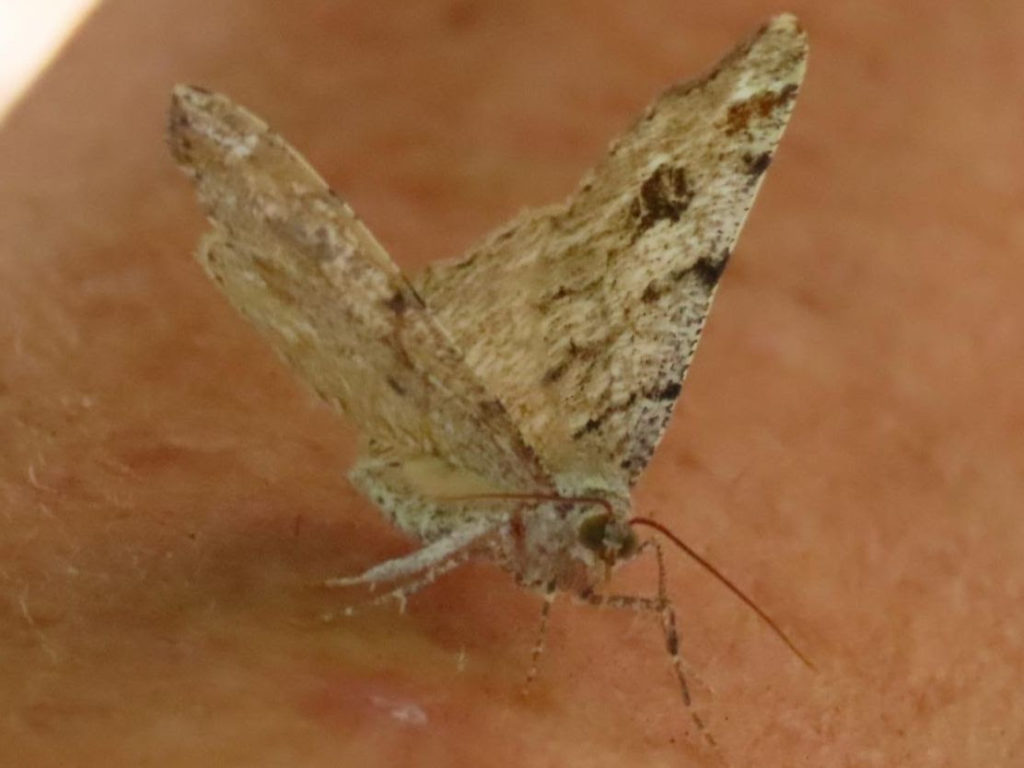
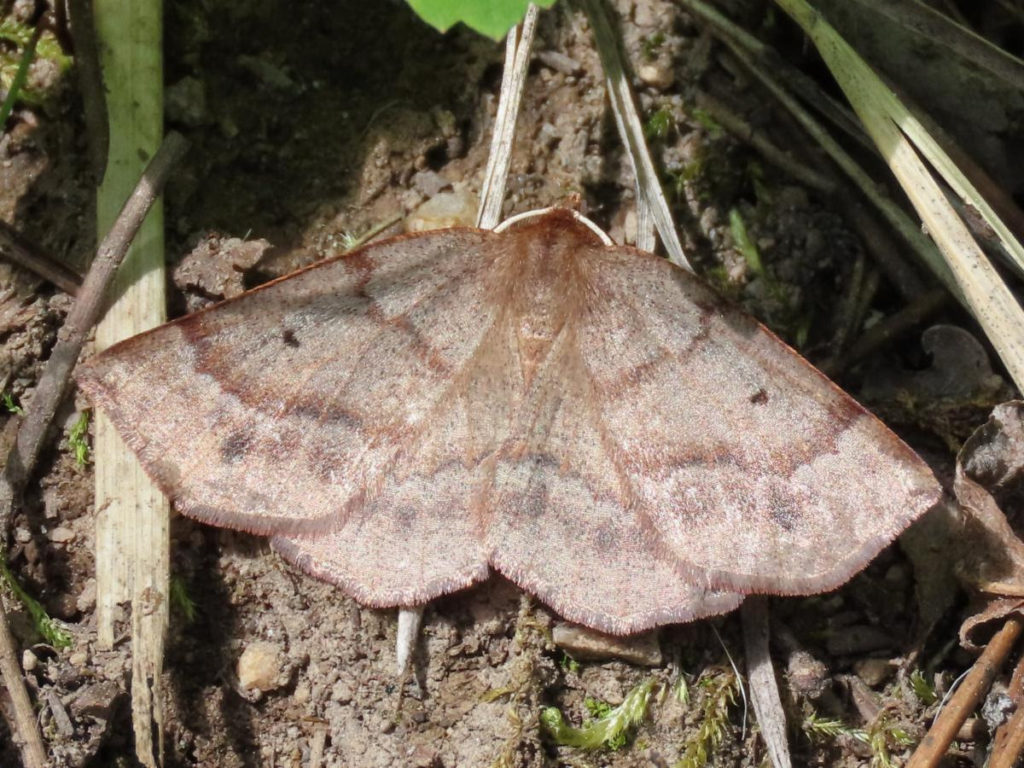
Geometrid Moth
Metarranthis sp.
Moths in this genus are more common in the eastern half of the United States, where their preferred habitat – deciduous forest – is more concentrated, but there are some scattered sightings in the west. Adults are usually found in the spring and early summer, from April to June. They are recognized by their broad, pointed forewings, but identification to species is difficult.
Kelly Dix, May 30th, 2023. Victor, MT.
California Tiger Moth
Leptarctia californiae
This small (~12 mm) moth is found across the western United States, from New Mexico to Canada, in open forests and meadows in mountainous regions. The adults are on the wing in the spring and early summer, usually from March to July.
Kelly Dix, May 24th, 2023. Bull Creek, Kootenai National Forest, MT.
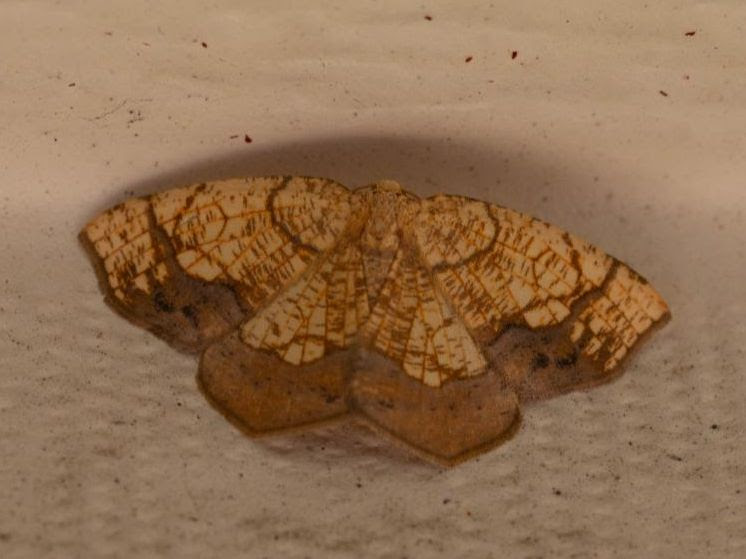
Horned Spanworm Moth
Nematocampa resistaria
These beautifully patterned moths can be found across much of the US, except for the southwestern states. Since they are found across a wide range, the caterpillars are capable of feeding on many hardwood and softwood species of shrubs and trees including pine, hemlock, fir, larch spruce, alder, ash, birch, and more. While they may have more than one brood a year in other (warmer) parts of the country, there is only one generation here in MT.
Misty Nelson, July 16th, 2023. South Hills, Missoula, MT.
Ugly Nest Caterpillar Moth
Archips cerasivorana
Someone clearly did not approve of the way the caterpillar of this species constructs its nest. Like other tent caterpillars, the larvae spin a silk nest and congregate around it, using it as a home base to come back to after their foraging activities. The ugly nest caterpillar incorporates leaves into their nest, tying them together to complete their shelter. The adults are small, about 20 mm, and on the wing from July to September.
Brenna Shea, July 14th, 2023. CSKT Bison Range, Charlo, MT.
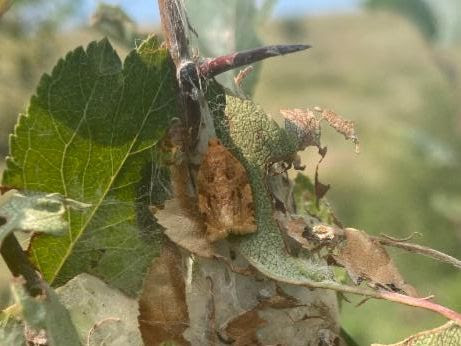

American Hornet Moth
Sesia tibiale
Delicious or dangerous? Many predators would pass on these day-flying moths…and many people would be wary in their presence. In flight they closely resemble wasps, even producing a droning sound to further the ruse. They can be found from Nova Scotia and the New England states, west to Vancouver, British Columbia. And also in the Rocky Mountain states to the Pacific Coast. The adults only live 4-10 days and are most commonly found in July and early August. Larvae develop in wood and bark of live poplars and willows.
Carolyn Taber, July 18th, 2023. Missoula, MT.
Skunk Moth
Polix coloradella
It’s easy to see where this moth gets its name. Sometimes referred to simply as “The Skunk,” this small (9-12 mm) moth is the only representative of the genus Polix in North America. Records of sightings are scant and scattered across the northern United States. Adults are on the wing in June and July, often found at moth’s favorite spot to hang – near porch lights.
Kristi DuBois, July 22nd, 2023. Missoula, MT.
